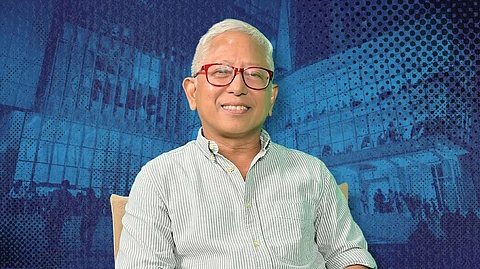
- NEWS
- the EDIT
- COMMENTARY
- BUSINESS
- LIFE
- SHOW
- ACTION
- GLOBAL GOALS
- SNAPS
- DYARYO TIRADA
- MORE

In the wide landscape of arts and design, another name has just arrived — not just for modern creations, but for honoring the history and identity of those who have shaped Filipino culture.
Gerry Torres has made space, place and light for them to shine and be noticed and appreciated by many eyes.
Going back to school was the last thing Gerry thought he would do, but fate had other plans. From being an architect, he found himself teaching at Benilde, a school that opened countless opportunities for his career and passions.
From the start, he was appointed chairperson of three programs — an early factor that cemented his place in education. His journey eventually led him to the cultural sphere, serving as Dean for the Center for Campus Art (CCA).
Gerry led the CCA for 10 years before being transferred to head the René Fashion Museum.
In Gerry’s work, preservation and innovation go hand in hand, with innovation always at the core of the campus art agenda.
“Innovation is one of the two buzzwords of Benilde. So we’ve really been trained to, you know, think out of the box,” he says.
When curating exhibits, Gerry deliberately avoids relying solely on paintings or traditional visual arts, believing that too many galleries already focus on them. Instead, he highlights industrial design, furniture, architecture, interiors and fashion — fields he felt were largely untapped.
“I see exhibits as potentials for learning… the learning does not stop in the classroom. It can go beyond,” Gerry notes.
For over a decade, he staged 26 major shows at the main gallery and developed an estimated 50 more in satellite galleries.
Initially, donated pieces and early designs were stored in a warehouse, but Benilde president Brother Dodo Fernandez proposed building a museum to properly house and care for them.
Getting students to visit galleries and museums was a challenge at first. Some would only come under threat of absences or grade deductions — a solution Gerry knew wouldn’t work forever. So, the CCA decided to bring the museum to the students, setting up a gallery right next to the cafeteria in hopes they would browse before grabbing a snack.
For Gerry, fashion reflects the times. “One dress can already tell you the story of how we were back then, our economic situation, how and where they were worn and why these events were put up. It really is a manifestation of what we were as a people and as a nation.”
Two of his major exhibits featured the works of Ramon Valera, whose designs from the 1940s to the 1970s reflected a prosperous era. Another was dedicated to Ben Farrales, who passed away in 2021; his family donated his pieces to the museum. Gerry also holds works by Pitoy Moreno, National Artist Salvación Lim Higgins, Aureo Alonso and an extensive collection from Cesar Gaupo.
Today, Gerry’s collection holds about 500 garments.
Slated to open in 2026, Benilde’s fashion museum will occupy a restored 1938 Art Deco building along Taft Avenue — a rare survivor of World War II that once housed former Vice President Fernando Lopez’s apartments. Over the years, it was home to Instituto Cervantes, the Spanish Embassy and various US companies before Benilde acquired it in 2010.
For Gerry, who will lead the project, the “Miracle Building” is more than a venue — it is a time capsule. He envisions visitors stepping inside and feeling transported to the mid-20th century, surrounded by a collection celebrating Filipino designers of the 1940s and ’50s.
An architect, educator and curator, Gerry has always tied his work to storytelling — whether through spaces, teaching or exhibits. He sees the museum as a working lab for students, giving them hands-on access to Philippine fashion history beyond textbooks and photographs.
“You can’t study fashion by just looking at photos,” he says, stressing the importance of touching and examining fabrics, beadwork and craftsmanship.
The museum’s mission is two-fold: to showcase world-class Filipino creativity and to share knowledge widely, both onsite and online. Digitization of the collection is underway, with plans for a public website and outreach to inspire similar institutions in the Visayas and Mindanao.
Ultimately, Gerry hopes the space will boost national pride and strengthen the cultural confidence of Filipinos.
“When you see a beautifully designed dress by a Filipino, you realize we are world-class,” he says. “That’s the story we want to tell.”
The institution’s first focus will be on modern Filipino fashion from the 20th century onward — covering the 1900s to the present. This period includes many pieces often overlooked in favor of 19th-century Maria Clara styles, already well-documented in other museums.
The initial emphasis will be on women’s wear, with plans to eventually expand to celebrity pieces. The collection already includes standout garments like Charlene González’s 1994 Miss Universe national costume by Pitoy Moreno, and Gerry hopes to acquire designs from Mak Tumang, the Benildian behind Catriona Gray’s iconic gown.
“We want to do this properly,” Gerry says. “I look forward to opening our doors to the public and sharing a collection we are truly proud of —not just with our students, but with all Filipinos.”
